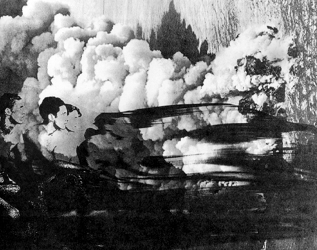
Photo Credit: Michaelsgatling
Nonlinear narrative has existed throughout history but has often been considred defective or inferior to linear narrative. As far back as classical Greece, critics said that Homer's Odyssey has fewer narrative "defects" than the Iliadbecause the protagonist is always present, and there are fewer loose ends. Even in the twentieth century readers and viewers have complained when a story is difficult to follow or when it it not resolved nicely. With Pulp Fiction, Quentin Tarantino allowed us to follow three stories that stopped, started, reversed and replayed themselves as easily as a VCR. With the advent of hyperfiction and hyperdrama, the timespace structures are infinite and also relative to the surfer who chooses to enter, leave, interact or even follow her own narrative. Just as Aristotelian dramaturgy reflected that culture's views of time and space, our nonlinear narrative could reflect the discoveries of quantum mechanics and cosmology, using space as a microcosm or macrocosm, time that goes back to the future or winds around itself and timespace that unites the two in Einstein's curved spacetime or Stephen Hawking's black holes. The possibilities for nonlinear narrative are endless.